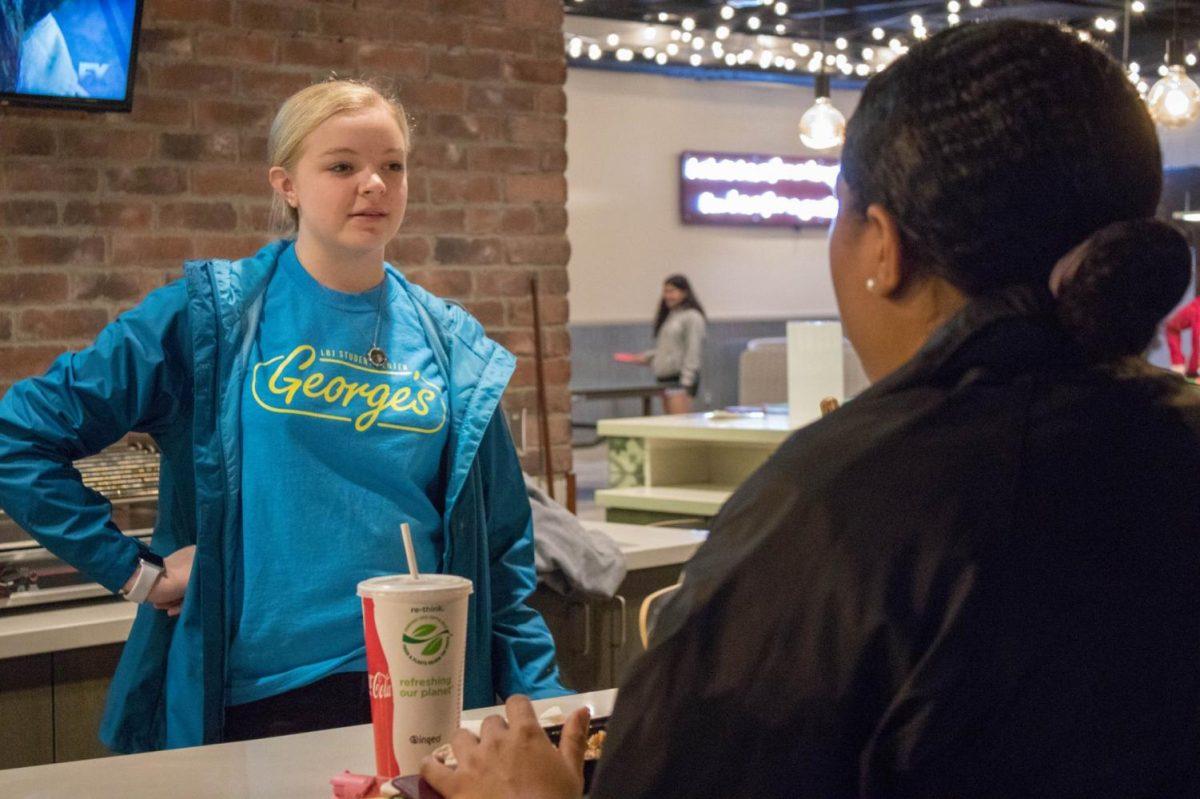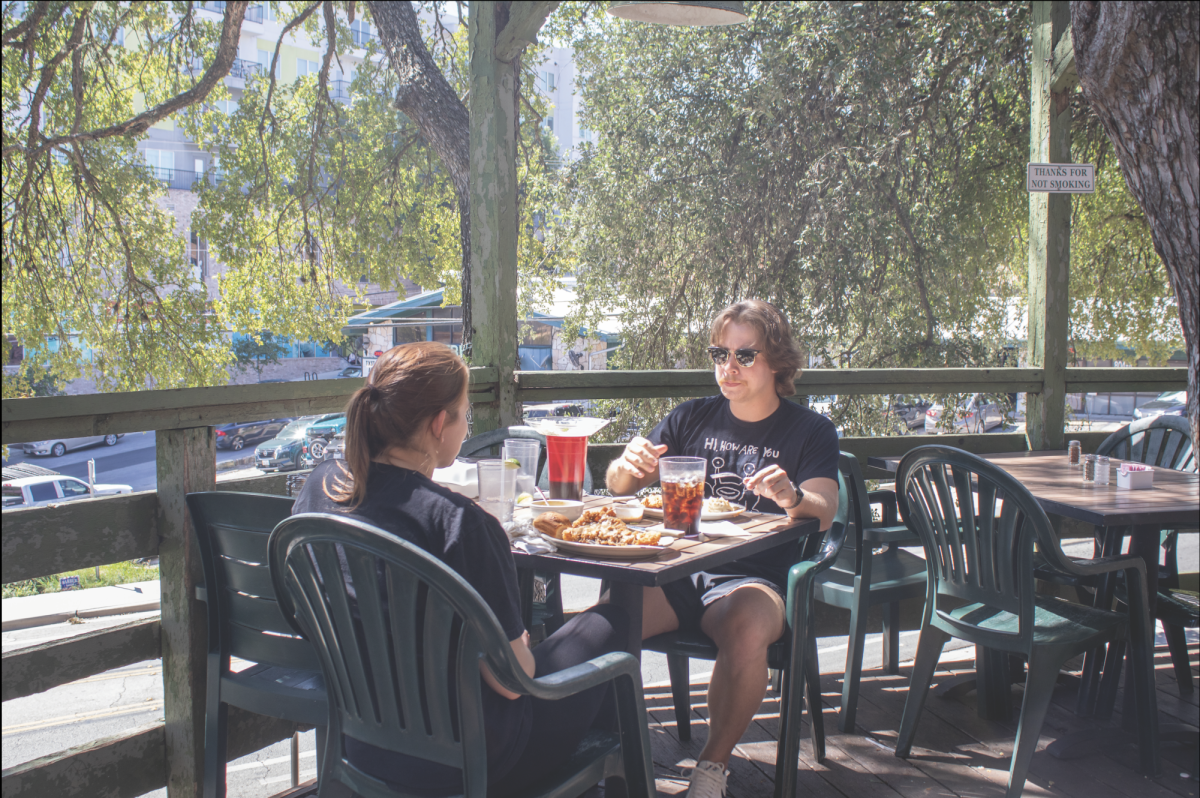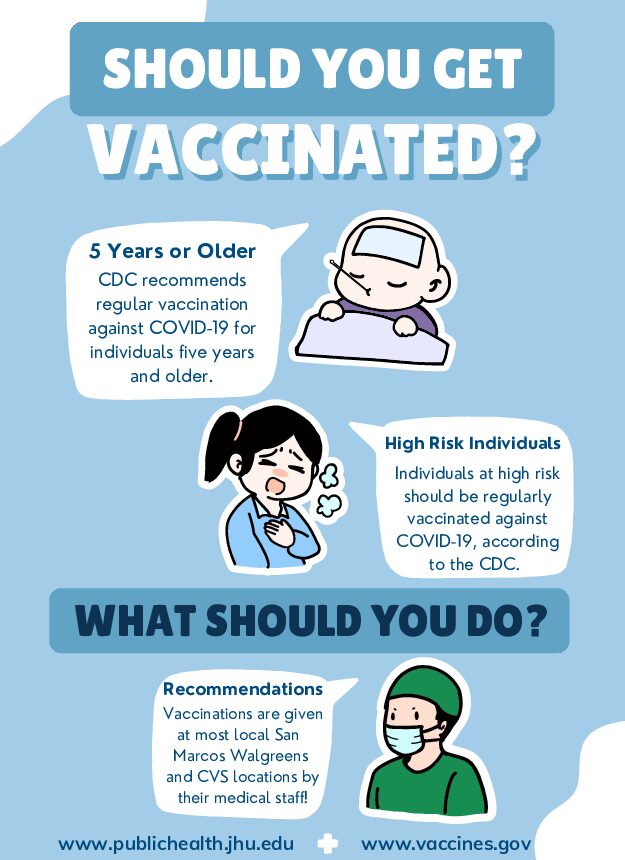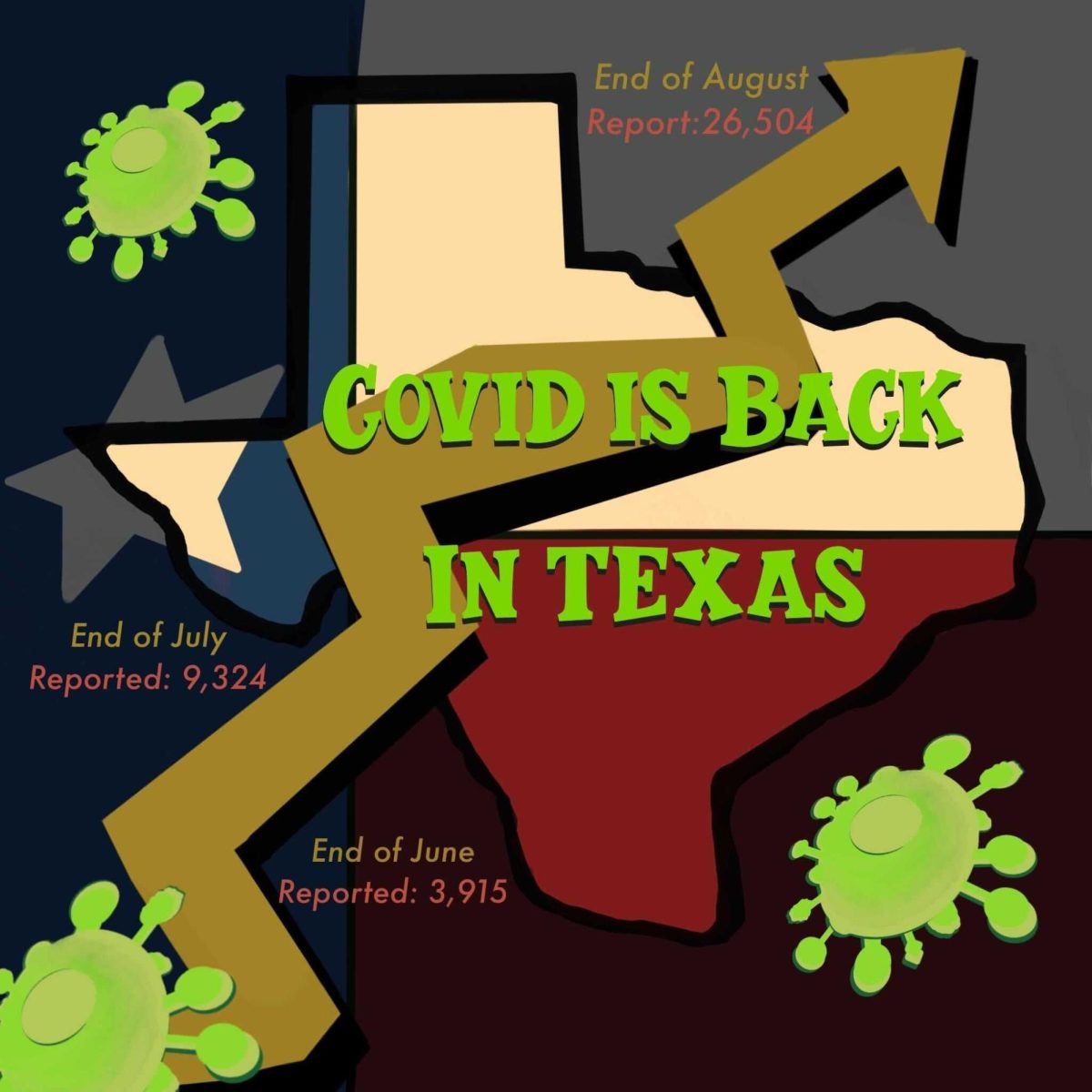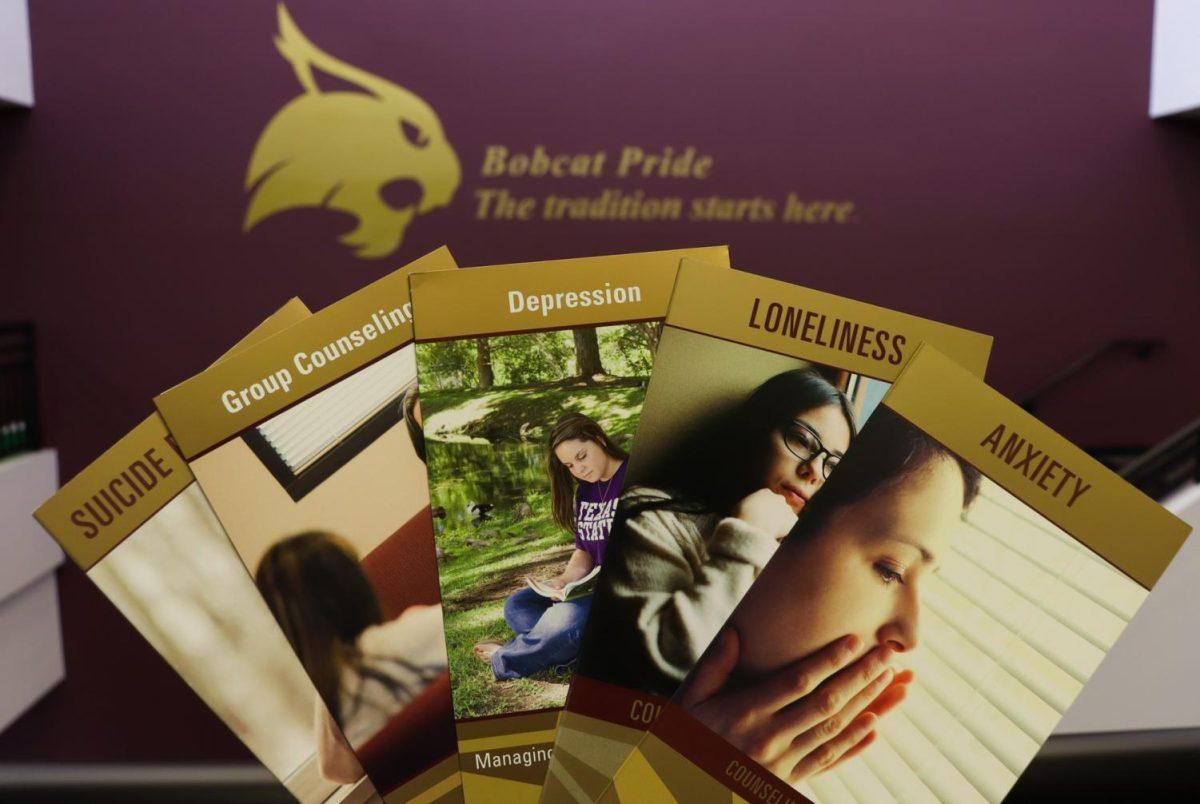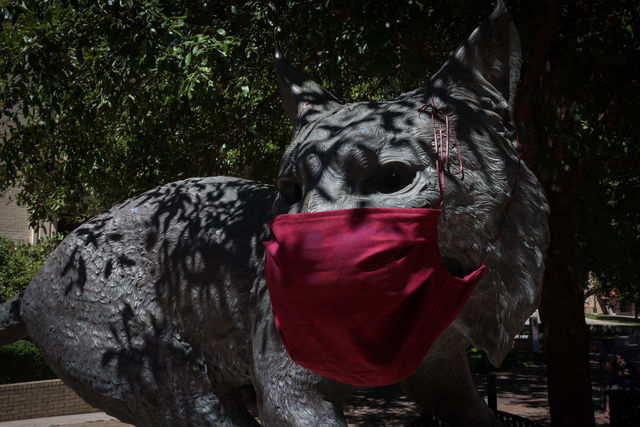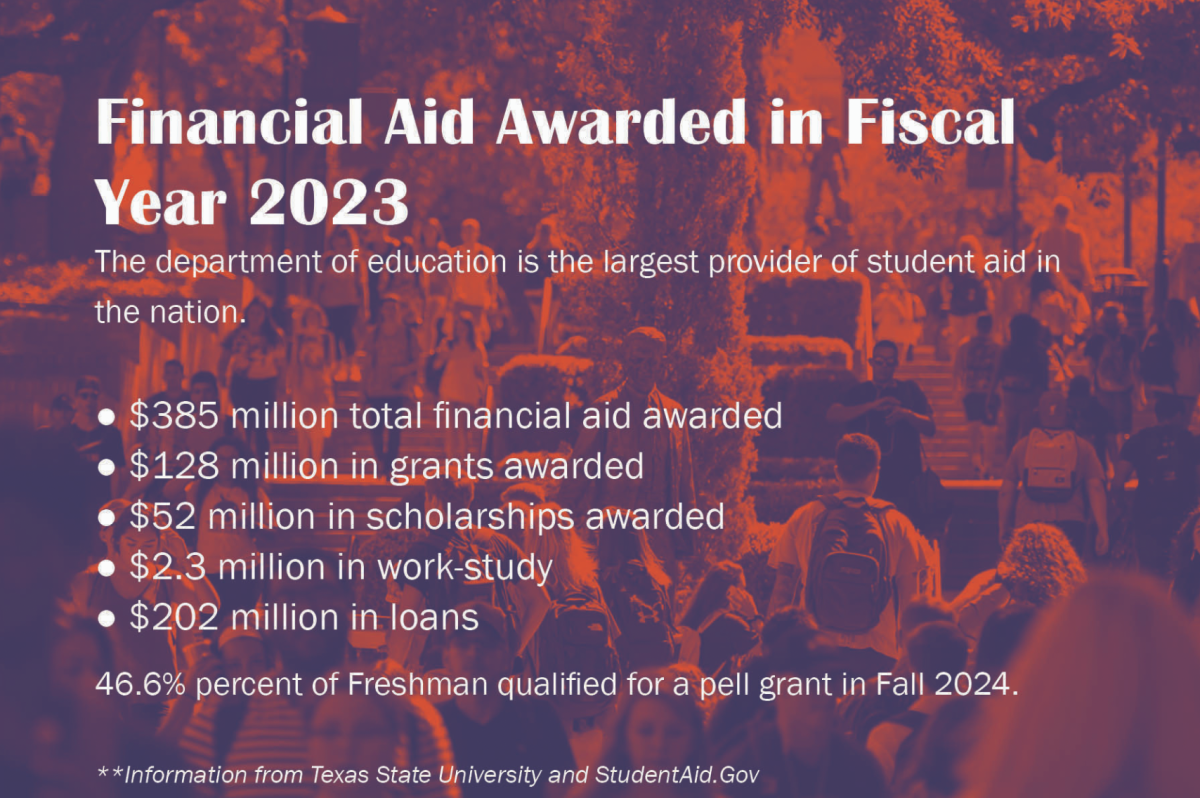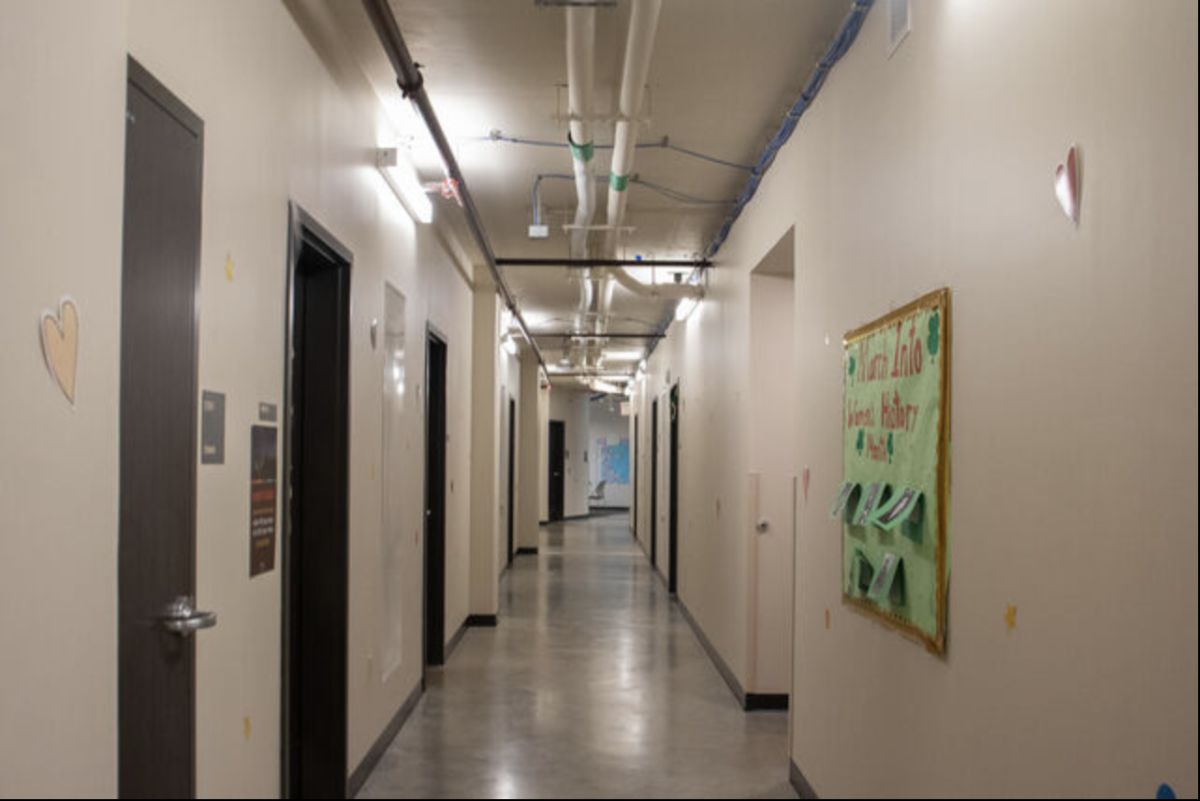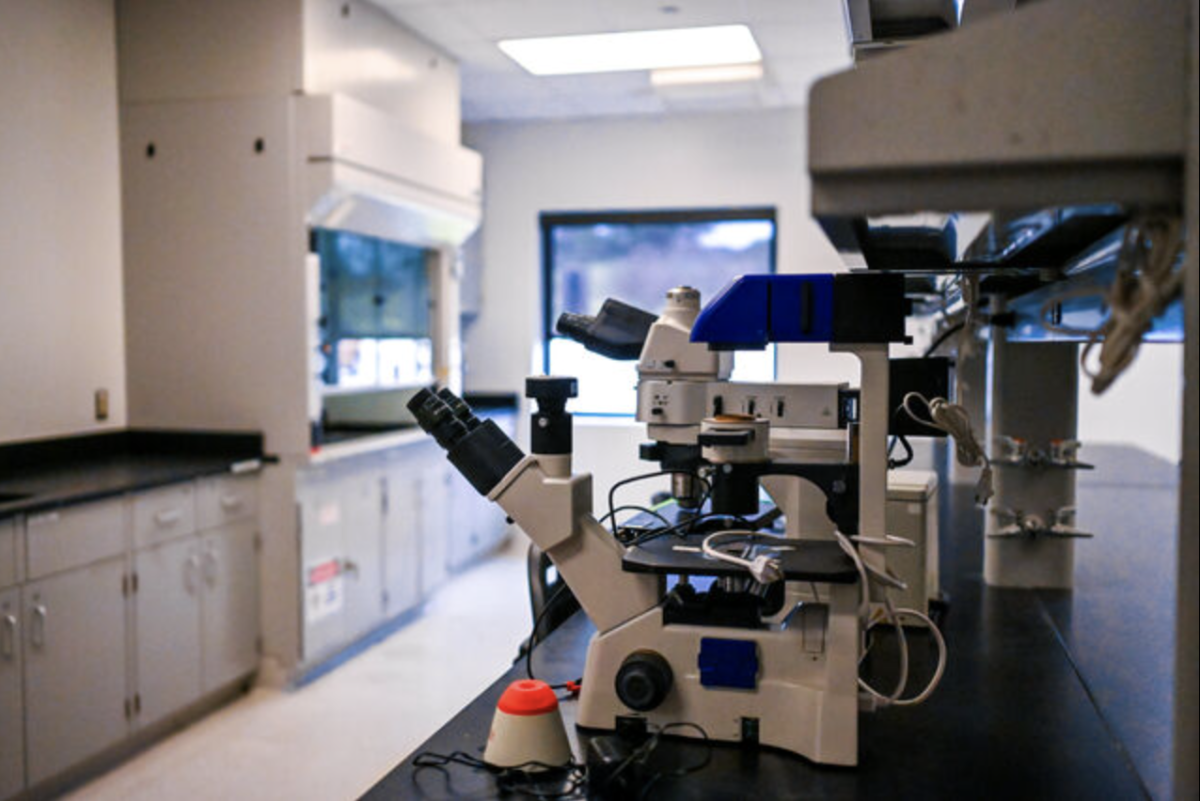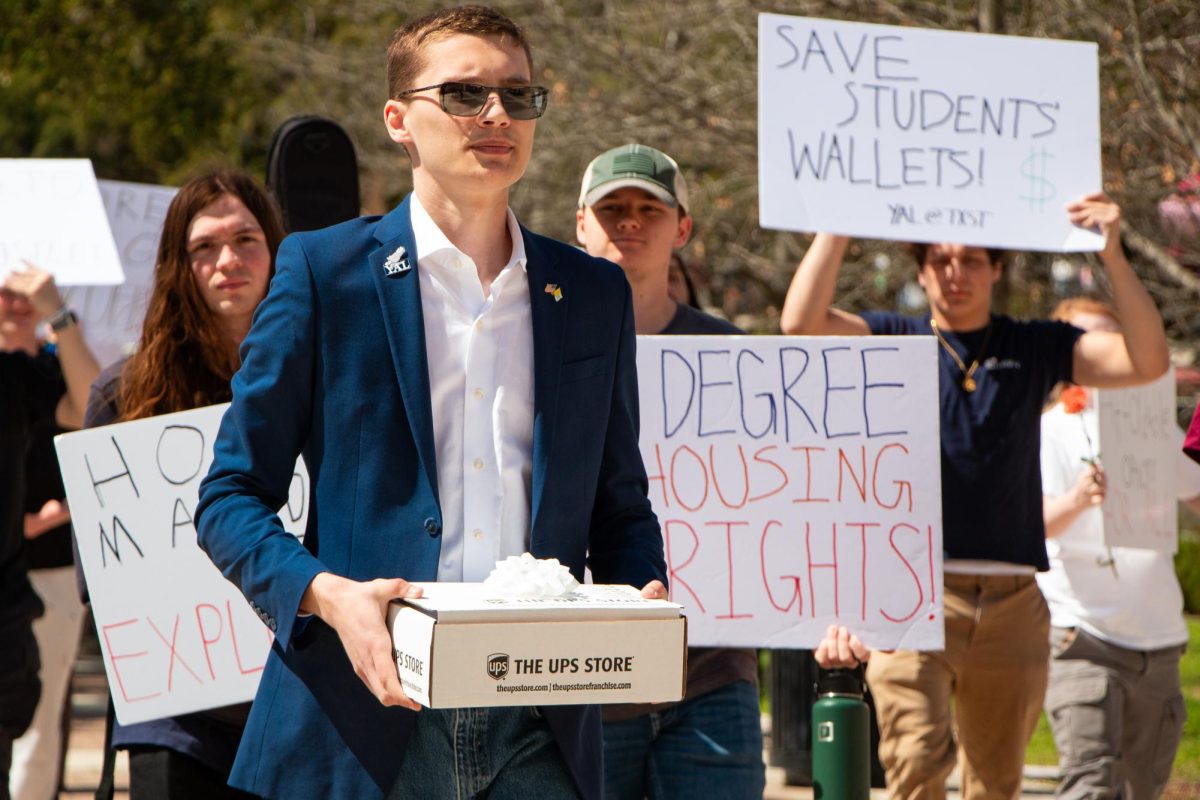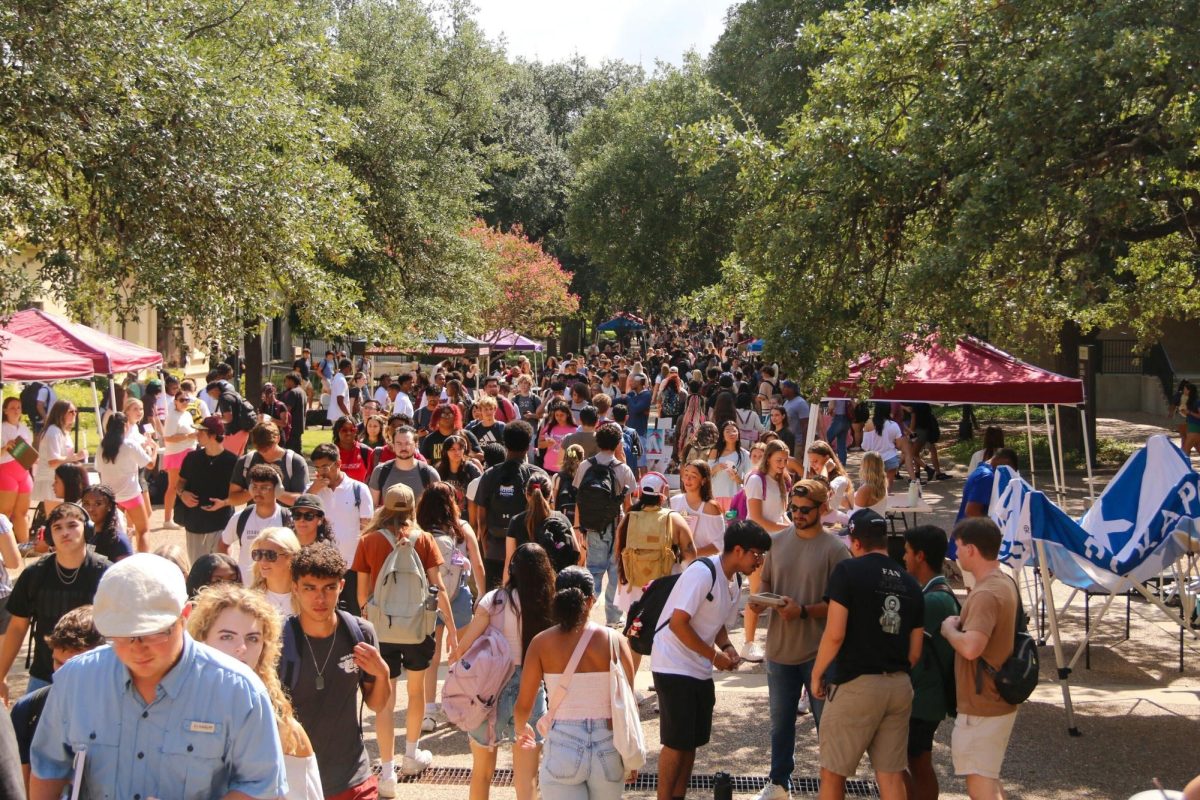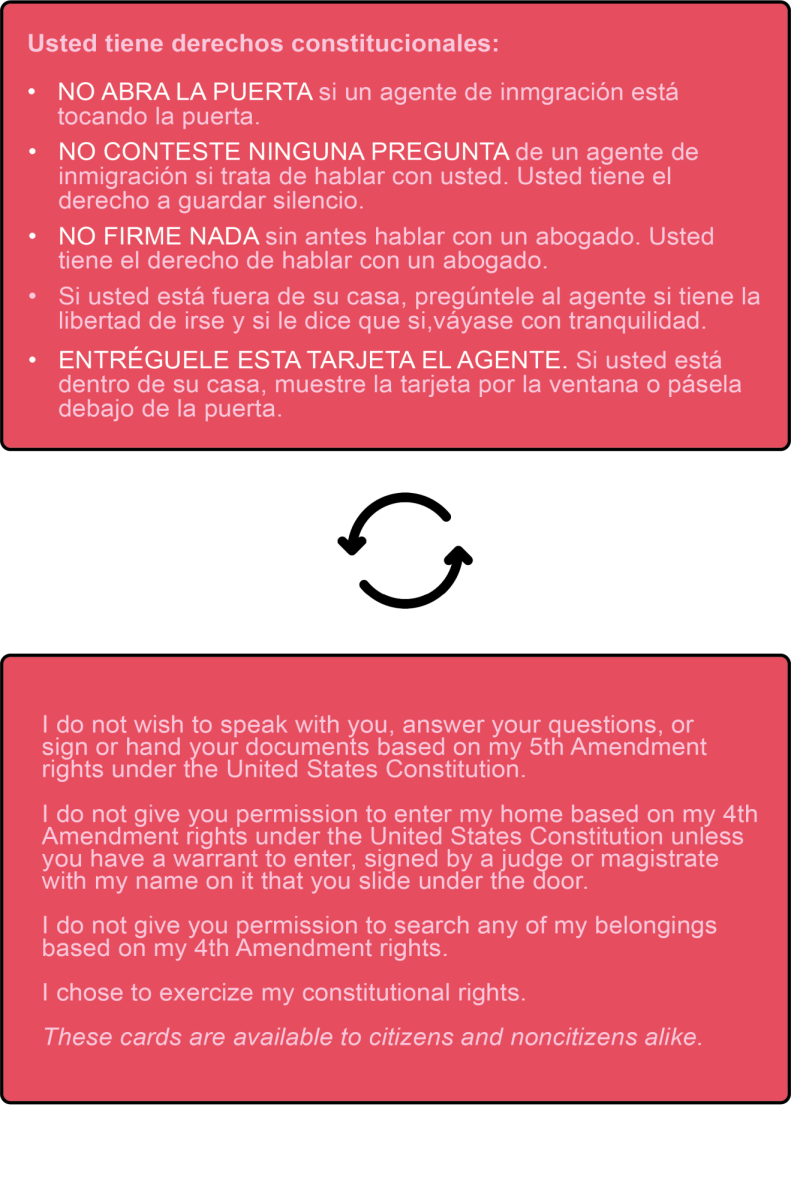Editor’s note: University officials announced today, April 1, all Texas State employees, including student workers, will be receiving paid sick leave, in accordance with the Families First Coronavirus Response Act, effective April 1.
The COVID-19 pandemic has left student employees struggling to make ends meet since losing their jobs, and for those considered essential workers on campus, they fear they are at risk of contracting the virus.
Since Texas State closed its campus for the remainder of the semester—switching all classes to online teaching and limited operations—the few student workers who were able to remain employed as essential workers worry that a lack of protection and benefits increases their risk of contracting COVID-19.
Hailey Thomas, psychology and Spanish double major senior, works as a switchboard operator on the university’s mainline. She is considered an essential worker and is still required to come to work despite the stay-at-home order passed by Hays County Judge Ruben Becerra.
Thomas said those in her office who can work remotely have been asked to work from home but others, like herself, carry an essential employee document at all times, certifying her work as essential in case she is pulled over. Although her department has been proactive from the start, she worried not addressing the potential of an office worker getting sick could increase the risk of transfer.
“I know that’s not really something people want to think about, but I feel like we need to have a plan in place if that happened. We do already have one person self-quarantining for two weeks because he was four times removed from a confirmed case,” Thomas said. “Everyone in my office is taking it very seriously and they’re doing all they can, but ultimately, providing protection for student employees doesn’t really fall to them.”
Email correspondence between Thomas and a few of her superiors highlights the “grey area” in which student employees fall.
“I’m hoping none of you get sick but if you do, then a doctor’s note sounds like some security. Not sure if you fall under the ‘part-time employee,’ that’s a grey area,” the email from her supervisor reads. “I appreciate you coming in to work regardless.”
Deyanira Rossell, public information officer for the Division of Finance and Support Services, said several measures have been implemented for employees, including student workers, to continue working on campus. The low number of people currently present on campus allows for a high level of social distancing for on-campus workers.
Student workers can also apply to work remotely if their job allows it. Rossell said students should talk to their departmental heads or supervisors to make sure the work can be done from home and then fill out an application.
“Supervisors have at their disposal policies, resources and tools to promote flexibility and remote work options for their student workers to the extent their positions allow it,” Rossell wrote in an email. “These changes are in response to necessary actions the university has taken to slow the spread of COVID-19. Among the priorities—moving to remote learning for as many students as possible, implementing social distancing, increasing deep cleaning throughout all our grounds and shuttles and sharing important resources and updates on heightened precautions for the Bobcat Community.”
Congress’ recently passed Families First Coronavirus Response Act goes into effective April 1 through December 31. It “requires certain employers to provide their employees with paid sick leave or expanded family and medical leave for specified reasons related to COVID-19.”
Under FFCRA, an employee qualifies for paid sick leave if they are unable to work or telework, because he or she (1) is subject to a federal, state or local quarantine or isolation order related to COVID-19, (2) has been advised by a medical professional to self-quarantine because of COVID-19, (3) is experiencing COVID-19 symptoms and is seeking a medical diagnosis, (4) is caring for an individual subject to an order mentioned in (1) and (2), (5) is caring for a child whose school or place of care is closed due to COVID-19, (6) is experiencing any other substantially-similar condition specified by the Secretary of Health and Human Services.
If an employee qualified for reasons (1) through (4) and (6), the duration of leave for a full-time employee is 80 hours. A part-time employee is eligible for the number of hours that an employee works on average over a two-week period.
While some students will be able to continue working during this pandemic, many students considered non-essential workers were laid-off for the rest of the semester and now are struggling to find ways to earn income.
Freddy Gonzalez, health and fitness management junior, worked for the university’s sports marketing department and the football team’s film department. He said within 48 hours all student workers were informed of their job loss. Many students who now find themselves unemployed believed they still had jobs until a few days ago.
“Obviously for health reasons, I don’t blame them,” Gonzalez said. “I think everything that’s happening right now needs to happen, just taking all these measures and precautions. I’m glad that at least the sports administration was able to get that right in the first week.”
Gonzalez thought he would have been able to sustain himself with another job in Austin he already had until the business also closed. Despite having some money saved for the coming week, Gonzales, like many students, will have to return home.
“I saved a little amount of money just so I could pay for my phone bill, my utility and my medical insurance,” Gonzalez said. “Unfortunately, with not having a job and being a student, the majority of us live paycheck to paycheck, so pretty much it’s not an option, I would have to go back home in a matter of a week or so. I don’t have anything left here; I won’t be able to pay for anything anymore here.”
Many students who now find themselves unemployed were relying on work-study to finance their studies. As student workers, they will no longer have a job for the semester, people like Ashlyn Underwood, psychology and criminal justice senior who works at the Meadows Center, have had to find other ways to earn their work-study earnings to finish the semester.
“Miranda Wait, who is the deputy Spring Lake operation… did offer certain personal jobs that she could have people do,” Underwood said. “She personally has done a lot to help us. She’s been having people do odd jobs out of her farm, and she personally has made sure that the people who really needed to work have something to do and that she paid them.”
The rate of unemployment has been increasing nationwide. As of February 2020, the unemployment rate in Texas was 3.5%. For those aged 20-24, the nationwide unemployment rate is currently at 6.4%, according to the U.S. Bureau of Labor Statistics.
Students who experience financial hardship can contact the Student Emergency Services. More information can be found on the Texas State University’s faculty and staff webpage for COVID-19.
Individuals concerned about possible exposure to COVID-19 are encouraged to contact their healthcare provider or the Hays County Local Health Department at 512.393.5520. For additional information about COVID-19, visit the Texas Department of State Health Services or the Centers for Disease Control website.
The University Star’s COVID-19 coverage can be found here.
Categories:
COVID-19 pandemic leaves student workers protectionless and penniless
April 1, 2020
Audrey Busch, art education freshman and Geroge’s employee, conversing with Alex Humphrey, animal science freshman, over lunch, Feb. 10, 2020.
0
Donate to The University Star
Your donation will support the student journalists of Texas State University. Your contribution will allow us to purchase equipment and cover our annual website hosting costs.
More to Discover



